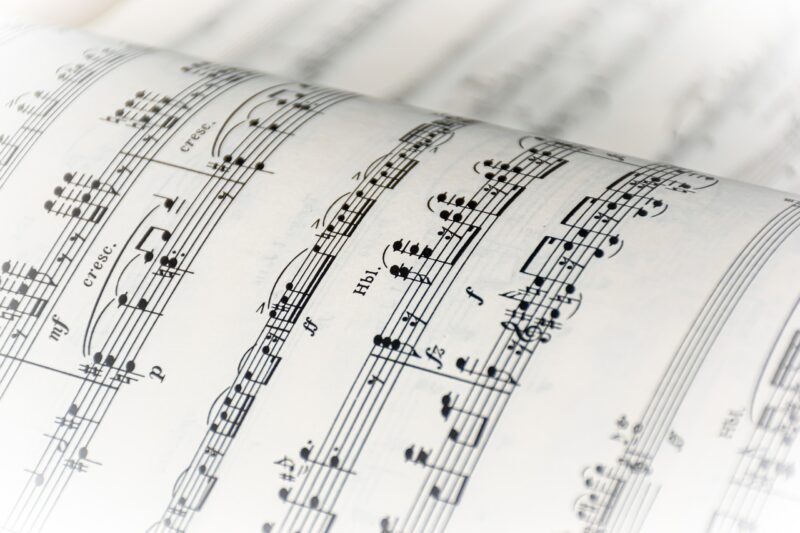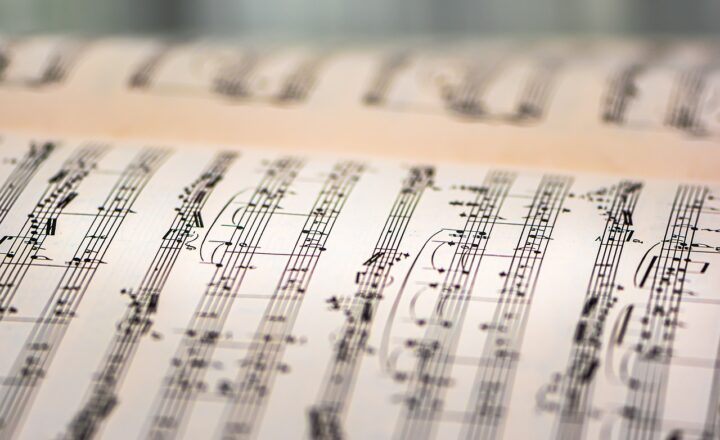
Reading music can initially seem daunting to beginner musicians, but with a little understanding, you can unlock your potential to play and enjoy music more fully. This guide is designed to help new learners interpret music notes and understand the basics of reading sheet music.
1. Understanding the Staff
At the heart of music notation is the staff. The staff consists of five lines and four spaces, where each line and space corresponds to a specific musical pitch.
– **Lines:** From bottom to top, the notes on the lines of the staff are E, G, B, D, and F. A helpful mnemonic for remembering these notes is “Every Good Boy Deserves Fudge.”
– **Spaces:** The notes in the spaces spell out the word FACE.
Learning to recognize these basic pitches is the first step in reading music effectively.
2. Clefs: Assigning Pitch to the Staff
A clef is a symbol at the beginning of the staff that indicates the pitch range of the notes. The two most common clefs are the treble clef and the bass clef:
– **Treble Clef:** This clef is used for higher-pitched instruments and voices, and it circles the second line of the staff, indicating that this line represents the note G.
– **Bass Clef:** Used for lower-pitched instruments, this clef dots the fourth line, which represents the note F.
Recognizing which clef is used helps musicians know which notes correspond to the staff lines and spaces.
3. Note Values: Duration of Sound
Notes are not only defined by their pitch but also by their value, which indicates how long they should be held. The basic note values include:
– **Whole Note (𝆗):** Lasts for four beats.
– **Half Note (𝆖):** Lasts for two beats.
– **Quarter Note (𝆕):** Lasts for one beat.
– **Eighth Note (𝆔):** Lasts for half a beat.
These notes can also have ‘tails’ or additional symbols attached, indicating they are slices of these values (like eighth and sixteenth notes).
4. Time Signature: The Rhythm Framework
Located at the beginning of a piece of music, the time signature tells you how many beats are in each measure (the section between the vertical lines on the staff). The most common time signature is 4/4, meaning there are four beats per measure, and each quarter note equals one beat. Other common time signatures include 3/4 (three beats per measure) and 6/8 (six beats per measure).
The time signature helps musicians understand the structure of the piece and how to group the notes rhythmically.
5. Rests: Silence in Music
Just as notes signify sound, rests indicate silence. Here are some common rests:
– **Whole Rest:** Represents four beats of silence.
– **Half Rest:** Represents two beats of silence.
– **Quarter Rest:** Represents one beat of silence.
Learning to read rests is essential for maintaining proper rhythm and timing while playing.
6. Accidentals: Altering Notes
Accidentals (sharp, flat, and natural) are symbols that modify the pitch of a note. They appear before the note they affect and can indicate playing a note slightly higher (sharp) or lower (flat) than its natural pitch.
– **Sharp (♯):** Raises the pitch by a half step.
– **Flat (♭):** Lowers the pitch by a half step.
– **Natural (♮):** Cancels a previous sharp or flat.
Understanding accidentals is important for playing music accurately, as they frequently appear in many pieces.
7. Putting It All Together
Now that you understand the basics of the staff, clefs, note values, time signatures, rests, and accidentals, it’s time to practice reading simple pieces of music. Start with simple melodies where you can apply your skills.
– Try playing a piece in 4/4 time and gradually incorporate different notes and rests to help develop your timing and rhythm.
Reading music is a skill that improves with practice. The more you expose yourself to sheet music, the more comfortable you’ll become interpreting the notes.
8. Practice Tips for Beginners
Here are some practical tips to improve your music reading skills:
– **Regular Practice:** Dedicate a few minutes daily to reading and playing music. Consistency is key.
– **Use Flashcards:** Create flashcards for notes, rests, and their values to reinforce your memory.
– **Play with Others:** Find a friend or join a group; playing with others can enhance your rhythm and pitch recognition.
– **Pace Yourself:** Start slow; focus on accuracy over speed. As you become comfortable, increase your tempo.
Conclusion
Learning to read music notes opens up a world of musical expression and enjoyment. By understanding the foundational concepts outlined in this guide, new musicians can develop their skills and increase their confidence. With practice, anyone can learn to read music and enjoy playing their favorite songs.
Embrace the journey and remember, every musician was once a beginner. Keep practicing, and soon you’ll be reading music like a pro!







